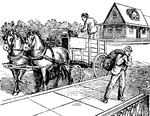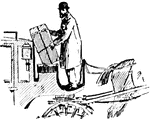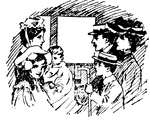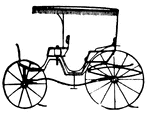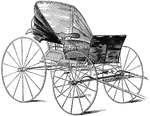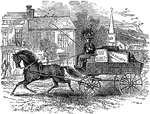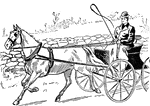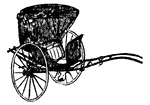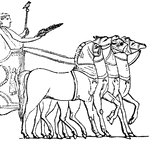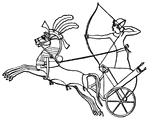The Horse-Drawn Transportation ClipArt gallery offers 206 illustrations of transportation means that are intended to be powered by horses pulling it, such as carriages, and related equipment. For images related to the horse, rather than the carriage, please see the Horse Care gallery in the Agriculture collection. For illustrations of people riding horses, please see the Horseback Riding gallery in Sports and Recreation.

Antyx
"The rim or border of anything, especially of a shield or chariot. The trim of the large round shield…

Araba
"A heavy, springless wagon, usually covered with a screen as shelter from the rays of the sun, drawn…

Break
A Break is a large four-wheeled carriage with a straight body, a calash top, and seats for 4 and for…

Brett
The Brett is a long, four-wheeled pleasure carriage, with a calash top, and seats 4 and a driver.

Britska
A Britska is a long carriage with a calash or movable top, and constructed to afford space for reclining…

Buckboard
"A four wheeled carriage, having a plank attached to the hind axle and to a crossbar in front." -Foster,…

Buggy Body
This is a buggy, also called a horse and carriage which refers to a light, simple, two person carriage…

Double Buggy
An illustration of a double buggy. Referred to as a double buggy because the buggy has two separate…
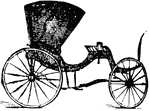
Cabriolet
A Cabriolet is a one-horse pleasure carriage with a calash top, a covering for the legs, and seats for…

Caissons and Horses
"The war in Virginia. Caissons and horses on the field at Bristoe Station."— Frank Leslie, 1896

Calash
A Calash is a light carriage on low wheels, seats 4 inside, and can, through a movable top and front,…
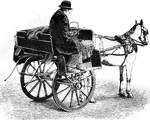
Jaunting car
"Each is a two-wheeled affair, with seats high up over the wheels and steps below on which our feet…

Carriage
This carriage was designed for the class termed the "sociables". The carriage is painted in rich ultra-marine…

Carriage
This carriage is designed with a retractable cover that can be used as a closed carriage, half open…

Provincial Carriage
This provincial carriage is painted to resemble cane work and the body is suspended on elliptical springs.

Carriole and Pony
"The carrioles are little carts not unlike our American sulkies, save that each carriole has a seat…

Ripon Cart
The Ripon cart is a horse-drawn village cart with two wheels and and a seat in the carriage.

Chaise
A chaise, sometimes called chay or shay, was a formerly popular, light two- or four-wheeled traveling…
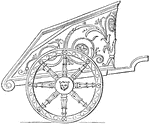
Chariot
"Arms and a chariot are here assigned to June through not properly a warlike goddess. The idea itself,…

A Chariot of Iron
A horse-drawn chariot for soldiers, used to break enemy battalions. The wheels are equipped with blades…

Men in Chariot Pulled by Goats
An illustration of two men standing in a chariot pulled by two small goats.

A Graeco-Ertuscan Chariot
"The chariot was discovered in 1903 in an Ertuscan cemetery near Rome. It dates from perhaps 600 B.C.…

Greek Chariot
A two wheeled car or vehicle used in various forms by the ancients in war, in processions, and for racing.

Greek Chariot
"In the battles, as depicted by Homer, the chiefs are the only important combatants, while the people…



!["[Late 19th Century/Early 20th Century] United States Army Ambulance"-Whitney, 1902](https://etc.usf.edu/clipart/14600/14641/armyambul_14641_mth.gif)











